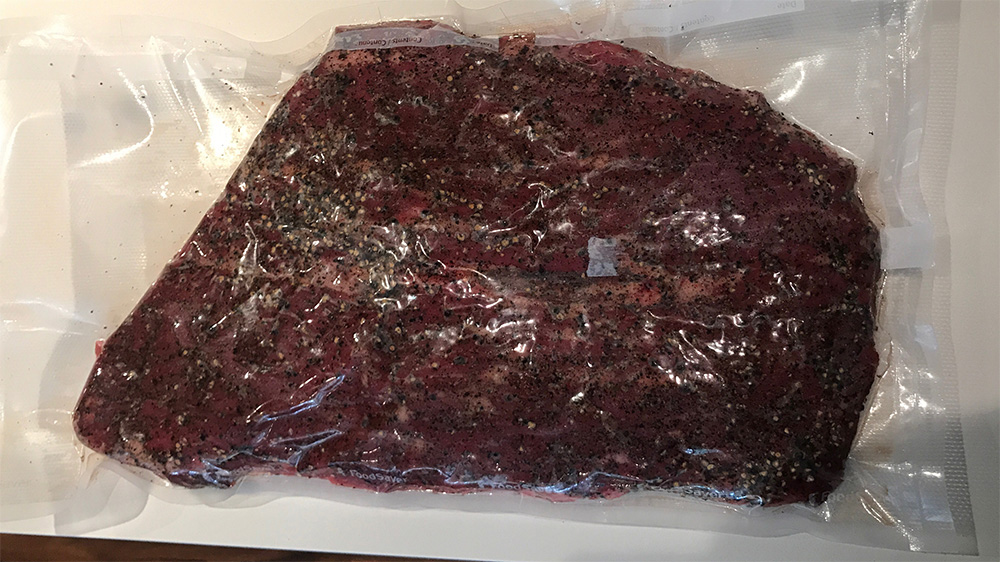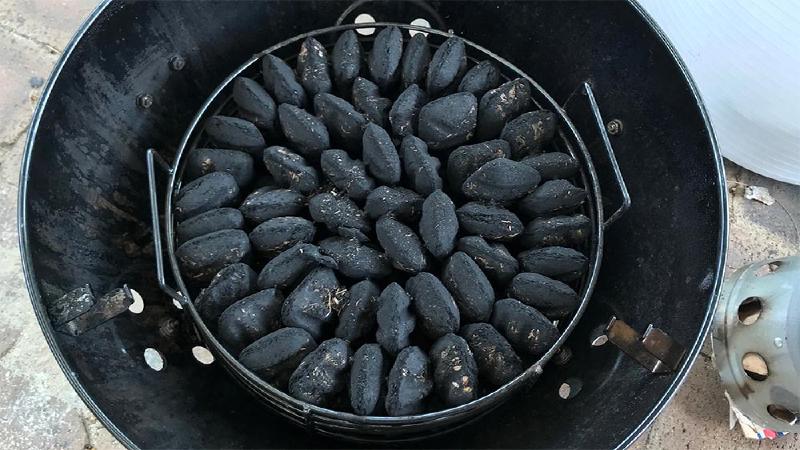For many years now, I’ve wanted to try my hand at Amercian style barbecue. My interest was first piqued hearing about Dave’s legendary ribs, though I don’t think I ever got around to trying them. More recently, I’ve actually tried some of the goodness from Side Door BBQ and joined the BBQ Club of Australia Facebook group.
As if being bombarded daily by people’s mouth watering bbq-grams, things hit peak BBQ when one of my closest mates got on the bandwagon and started dishing up delicious brisket. Enough is enough, I’ve given in and tried it for myself - and I suspect I’ve made a big mistake. A delicious, meaty mistake.
Gearing up
From the outset, probably due to Dave’s influence - I’ve wanted a vertical smoker. Despite being less of a space hog, they’re cheaper and a good starting piece of equipment. Cheaper is important, because I tend to get carried away with my hobby purchases and spend far too much too soon - so I (try to) keep things simple.
Funnily enough, my wife ended up trying to upsell me on a more traditional offset smoker at the BBQ store - despite it being almost twice the price. She’s typically the one pulling me into line, so it was hard to say no - and maybe I should have taken the opportunity, but I prevailed!
In the end, I ended up buying the following gear:
- Fornetto 18" Vertical Smoker
- iChef remote BBQ thermometer
- Generic BBQ Chimney (already owned)
And for consumables, I’ve been using the following:
I’ll clarify the chips versus chunks later on, but otherwise I’m good to go! I also picked up a handy dandy cover for the Smoker, so I can look after my tools - something I’m trying these days.
As an aside, I’ve been finding Brillo pads fantastic for cleaning the BBQ grill between uses - you can buy a pack of 10 off-brand pads for around $1.50. Huzzah.
So you bought a whole brisket…
American style BBQ is quite fashionable in Perth right now, and there’s some great local groups and businesses popping up to support the habit/hobby.
One of the convenient choices nearby is Troy’s Meats, dubbed the “Secret Butcher”. Whoops, sorry about that. Amongst other specialty cuts they provide briskets specifically for the BBQ market. Having geared up I headed down to buy some brisket for my first attempt. Having been a few times before for other purchases, I was pretty confident and happy to head down and grab some meat.
Confidence is good, but I can recommend checking they’re stocking the small (1-2 Kg) briskets before you head down to buy one. But I can also recommend panicking and buying a 5 Kg fullsize brisket, as you’ll end up learning a bunch more and having some fun along the way. So there’s that.
After getting home with my decidedly more expensive cut of meat, I had to figure out how to cut it down to use it.
Buying a full brisket (or as it’s known in the trade, a Packers Cut) you’ll end up with the full (primal) cut of meat straight off the bone. This will have a large fat cap which once trimmed down somewhat is ideal for BBQ and also needs to be cut down into two smaller cuts.
The first cut, the “Flat” is lean cut of meat which has the fat cap and is fairly… well, flat.
The second cut, known as the “Point” is a much fattier piece of muscle separated from the Flat by a layer of fat and has a pointy shape after being removed from the carcass.
So far, I had learnt that whilst butchers weren’t very inventive with naming things, they’re at least descriptive. As always, YouTube comes to the rescue for learning how to cut down the piece into the two constituent parts, and this video was one of the more useful ones for an absolute novice.
After trying my hand at it, I’m actually really happy with the results and plan on buying the brisket this way whenever possible.
Now, on to the cook!
My first cook
The goal for my first cook was to build some confidence with controlling the temperature of my smoker. My biggest fear was stuffing it up and wasting a perfectly good (and somewhat pricey) piece of meat. So I decided to cheat a little bit by trying something I had been thinking about doing later in the piece.
That totally reprehensible, non-traditional idea was to cook the brisket sous vide for 50 hours before smoking.
In theory, the cook temperature of 135°F is around the temperature at which the collagen and connective tissues in the meat start to break down. So by maintaining the meat at this temperature you do all the hard work up front.
This was the first long-term sous vide I’d done, and given the quality of meat and the length of the cook I finally upgraded from ziplock bags to a proper food vacuum sealer, as well as an insulated vessel for the water bath. Again, YouTube comes to the rescue for esky hacks.
For my first cook, I used a traditional plain salt and pepper rub and set the meat to sous vide. After approximately 46 hours because I’m impatient - I was ready to fire up the smoker.
This first cook was really rough and a great learning point - I got to experience a stall not just once at around 160F but again at 170F. One of these I was expecting, however I hit a few issues including my briquettes running out and the temperature generally running all over the place.
After all this however, I was able to turn out my first brisket. Delicious as sin, but in need of much improvement - the meat was quite dry and the connective tissues hadn’t fully cooked out.
Still, a very delicious starting point to build from.


Practice makes perfect
I have a confession to make, I wrote the first half of this post in 2017 and never finished or posted it until now. In the subsequent (4!) years since then, I’ve cooked a great deal more briskets on my smoker and am pretty happy with the results.
So instead of expanding my notes, I’m going to make some observations about how my process and results have changed in that time.
No more sous vide
This is kind of a no-brainer, after the first two cooks I was confident enough to cook my brisket properly.
One trick I have come up with for entertaining is cooking brisket ahead of time and slicing and vacuum sealing it. Then you can pop in a packet of brisket when your guests arrive and pull it when you’re ready to eat.
Way less stressful, and you can still have the smoker running to enjoy a beer and replenish your supply.
Sealing the smoker
One of the biggest issues with my early cooks was having to baby the temperature of the smoker - as a cheaper smoker it was prone to temperature fluctuations from wind blowing in through small joins in the body. I had initially planned to purchase LavaLock, a BBQ specific product that helps seal gaps in your BBQ and is temperature resistant.
However, after only a few cooks a wonderful thing happened - the soot from the smoker has congealed and helped insulate and seal those gaps. Soot is good, right? Anyway - I’m now able to start a cook and able to leave the unit going completely unattended throughout the cook if I like and the temperature stays very stable.
Smokewoods
I started out using coal briquettes which containing smokewood - a more expensive option than buying coal and smokewood separately, but was what all the cool kids were doing at the time. Despite being fashionable and working well enough, I could never get a full cook out of the coals and would have to add a second load of coals to finish things up.
After switching to a (much) cheaper briquette I can complete a cook with the initial set of coals. This makes my wallet much happier.
On the chips vs chunks front, I’ve settled on chips. I found chunks wasteful and I prefer to heavily smoke my meat in the early stage of the cook, and chips seem to work best for this. Again I think this ends up saving me a bunch of money.
I’ve tried a few different smoke woods including locally sourced ones and my favourite by a metric mile is Hickory. Yum.
Trimming the fat
The single biggest improvements I’ve made to my brisket however is leaving more fat on the flat. This is the part of the brisket that I predominantly serve to people and this is already plenty lean enough.
As a result, my briskets come out way juicier and heaps tastier. Bliss.
Looking forwards
All things said and done, I’m pretty happy with where this is at: I’ve got a tried and true process and recipe for brisket with a salt and pepper rub with hickory smoke.
But I haven’t branched out much further, so in the future I want to try chicken wings, steaks and fish. One day.
